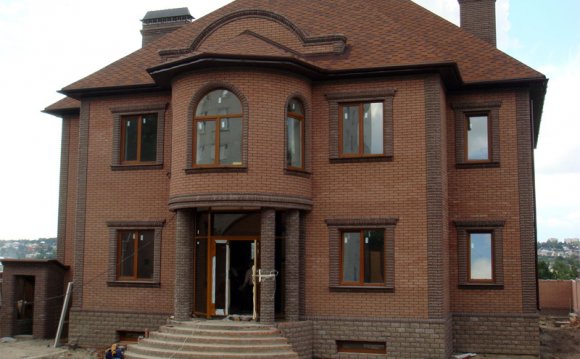
Which Brick Builds A House
 Not long ago, small-scale construction has not been popular with only summer domes. Today, homeowners need capital structures for round-trip housing. And the modern construction market offers them the option of choice, but makes it difficult to absorb technology and construction materials. We'll look at the characteristics of the most demanded ones.
Not long ago, small-scale construction has not been popular with only summer domes. Today, homeowners need capital structures for round-trip housing. And the modern construction market offers them the option of choice, but makes it difficult to absorb technology and construction materials. We'll look at the characteristics of the most demanded ones.
 The choice of material is the first and foremost question to which the answer precedes construction. It depends on the level of energy conservation and comfort in the house. The list of modern materials used today in small-scale construction is small.
The choice of material is the first and foremost question to which the answer precedes construction. It depends on the level of energy conservation and comfort in the house. The list of modern materials used today in small-scale construction is small. We're gonna narrow it down to the construction phasers, bringing it to your attention. Pros and cons A safe brick, a light foam and a warm brawn.
We're gonna narrow it down to the construction phasers, bringing it to your attention. Pros and cons A safe brick, a light foam and a warm brawn.
The brick is the most expensive and prestigious building from which hundreds of years have been built, often turning into family estates. The warm and cozy, they are as secure as possible from the destruction of the external environment
The advantages of brick houses:
- High resistance to atmospheric impacts and temperature changes;
- Fire safety;
- Biological sustainability (equivalent to mushrooms, moulds, insects and rodents);
- Good noise insulation;
- Durability and reliability (Cypich has long won the status of the most stable construction material);
- High strength;
- Excellent aesthetic qualities;
- A huge choice of architectural forms;
- breathing capacity, comfort humidity;
- Greenness, chemical harm.
Shortages of brick houses:
- Small dimensions of bricks give rise to long and hard work on the walls (but there are heat blocks of 510x250x219, which are comparable to foam);
- The need for " wet " work involving cement and lining, which imposes restrictions on " water procedures " in cold seasons;












